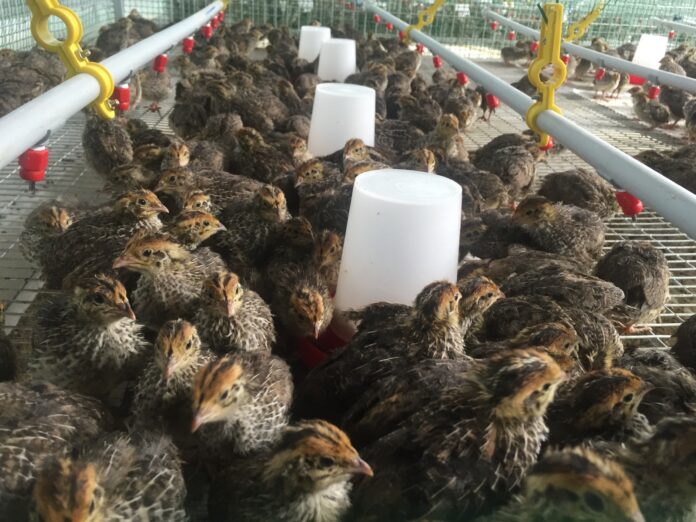Keeping quail at home is becoming increasingly popular. These small attractive birds take up far less room than poultry. This means the hobby is open to those with just a tiny garden or even a spare room indoors. Unlike hens and ducks that can be noisy, quail are quiet birds with a soothing chirrup of a call.
They make a good poultry farming because they are fairly easy to tame. This can be especially easy if you’ve raised and handled them from the day they hatch. Even so they can be easily scared, but patience and slow movements will win them around. Raising and keeping quail is not an expensive hobby, in fact you can often make some profit by selling the eggs, which they lay in abundance. Although they’re very small, their eggs fetch a premium price. Many small poultry keepers are expanding into this area to sell the eggs and as meat birds. Here are tips on how to incubate,house and rear them.
Quail Incubation
When buying incubating eggs, you don’t have any control of the sex of the birds. Usually this is half and half, male to female but you can be very unlucky and find yourself with six males from six eggs. In the absence of a broody quail you can use a broody bantam-a chicken of a small breed. Bantams may well hatch the eggs for you better than a quail. The average hatching time for quail eggs is 16 days although this varies according to breed, as opposed to 21 days for chickens and 28 days for ducks.
If you’re using a mechanical incubator, you should incubate to give an egg temperature of 37.5°C. Refer to the individual machine’s instructions. The eggs should be turned daily. Make sure you maintain humidity as per your incubators instruction manual. Ideally 45% until they start pipping rising to 75% until hatched. Once the quail eggs start cracking, reduce the temperature to 37°C.
Once hatched, dried and fluffed up move them to a brooding area with a heat lamp. This need not be anything more sophisticated than a cardboard box with newspaper and wood shavings on the floor. They need to be kept at 35.0°C for their first week and then reduce their temperature by 2.5 to 3 degrees Celsius each week for the until at six weeks they are totally off-heat.
Keeping of Quails
Provide water in shallow dishes, but put some large pebbles or glass marbles in the water. Quails are susceptible to drowning in the water. Quail should be fed on either a game bird starter mix or if you also rear chickens a chick crumb feed for the first two weeks.
After this you should begin to move the quail onto growers feed until 6 weeks of age. At this point the birds will be physically mature. For the male birds destined for the table follow with one week of finishers feed and for the female birds move them onto layers pellets or mash at this point. Using the finishers’ pellets will help to gain a good body weight in the final table bird and also helps to improve flavour.
Housing for Quail
At 6 weeks of age they can be moved into secure warm, dry and draft proof accommodation such as fenced house with a run, which would provide safety from predators and enclosed warm conditions for the birds. Being small birds, they’re a temptation for local cats. Quails are not as hardy as poultry and the ideal temperature range is 16°C to 23°C for them. In cold weather you will probably need to provide heating in the coop or even move them indoors into cages in extreme conditions.
Low level perches will be happily used by the quail. You should remember that quail can fly high. If you wish to restrict their movements you will need to have a covered run or to wing clip. This ability to fly should be kept in mind when cleaning out cages . Just one moment’s inattention and your bird can be flying away never to be seen again. Startled quail have a habit of flying straight up like a rocket. If their run has a wire mesh roof or suchlike, they can bang straight into it, doing themselves damage. A secondary lower roof of soft netting will protect against this problem. Finally,The housing should be cleaned out on a weekly basis with fresh bedding and litter material so that no sores or infections can take hold in the bird.
With these tips, rearing of quails will be as easy and cool as you may like.Happy quail rearing!








